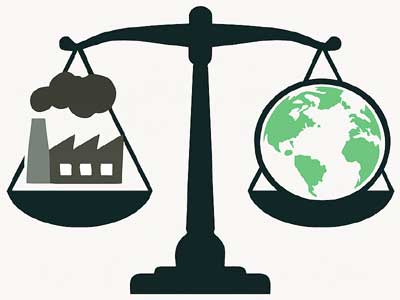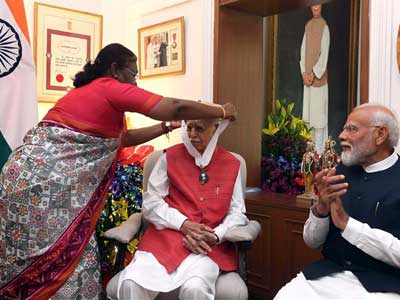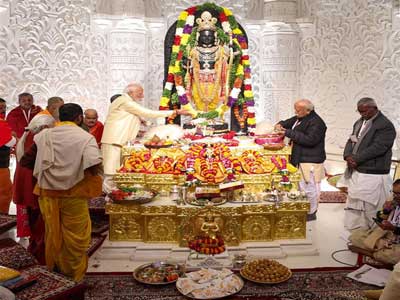Television remains one of the most powerful platforms for disseminating information and entertainment in India, connecting millions of households and making a significant contribution to the objectives of public awareness and participatory governance.
India’s Media & Entertainment sector contributed ₹2.5 trillion to the economy in 2024 and is projected to exceed ₹3 trillion by 2027. The television and broadcasting segment alone generated nearly ₹680 billion in 2024. The sector’s growth is driven by digital expansion, 4K broadcasting, Smart TVs, 5G, and OTT platforms serving over 600 million users.
Television in India has evolved from a limited experimental service to one of the world’s largest broadcasting networks, reflecting the country’s progress in communication technology, public outreach, and digital innovation.
India’s television journey mirrors the nation’s socio-economic development, from community education broadcasts in the 1950s to a fully digitised, multi-channel environment today.
Television broadcasting in India began on an experimental basis on 15 September 1959, initiated by All India Radio under the Ministry of Information and Broadcasting. The service was launched in collaboration with UNESCO to explore television’s role in education and community development. Initially, broadcasts were limited to a small radius around Delhi, with programmes focusing on school education and rural upliftment.
Regular daily transmission began in 1965, marking the establishment of Doordarshan as a dedicated television service within All India Radio. During this period, television rapidly transitioned from a limited experiment into a growing public service medium. New television centres were set up across major cities, including Mumbai (1972), Srinagar, Amritsar, and Calcutta (1973–75), and Chennai (1975), expanding coverage and strengthening the national broadcast infrastructure. Doordarshan emerged as one of the key aspects in the broadcasting landscape in India, reflecting the rapid expansion of television as a national medium during this period.
A landmark development of this era was the Satellite Instructional Television Experiment conducted in 1975–76 by ISRO and NASA, one of the world’s largest satellite-based education experiments. Under SITE, NASA’s ATS-6 satellite enabled direct broadcast of educational content to around 2,400 villages across 20 districts in six states, while ISRO provided ground systems and AIR managed programme production. Programmes focused on agriculture, health, family planning, primary education, and teacher training — laying the foundation for satellite-based development communication in India.
Doordarshan expanded its mandate beyond entertainment into news, public service broadcasting, community learning, and educational outreach. The network began structured broadcasts in school education, rural development, and awareness generation, setting the stage for future national initiatives such as UGC’s higher-education telecasts and CEC’s curriculum-based programming.
This period also marked Doordarshan’s growing role in delivering authentic, balanced news and public information across the country, as public broadcasting evolved beyond entertainment into a tool for social development. Regional Doordarshan Kendras strengthened local-language content creation, enabling broader representation of India’s cultural and linguistic diversity. With the expansion of television centres and regional production units, Doordarshan strengthened local-language content creation and broadened cultural representation.
By the early 1980s, the institutional foundations of Indian television were firmly established: a nationwide network, a development-oriented programming ethos, and growing technological capability that would drive the next phase of expansion, including colour broadcasting and national coverage.
The introduction of colour television in 1982, coinciding with the Asian Games in New Delhi, was a landmark in India’s broadcasting history. This period saw the rapid expansion of terrestrial transmitters under Doordarshan, extending reach to rural and remote areas. By 1990, Doordarshan’s network covered nearly 70 per cent of India’s population and 80 per cent of the geographical area. During the 1980s, Doordarshan also expanded the role of its regional broadcasting centres—known as Doordarshan Kendras—which produce and transmit programmes in regional languages, thereby strengthening linguistic and cultural diversity in national broadcasting.
With the economic liberalisation of the early 1990s, India’s television landscape opened to private satellite broadcasters. Early private channels included Star TV (1991), Zee TV (1992) and Sony Entertainment Television (1995), which introduced new formats in entertainment, film, music, and news programming and marked the beginning of a multi-channel satellite television ecosystem.
During this period, Doordarshan expanded and diversified its national and regional network. Channels such as DD National, DD Metro, DD News, DD India, and several DD Kendras continued to deliver public-service broadcasting and regional-language content, ensuring nationwide access as private networks grew.
India also transitioned to digital satellite broadcasting during this era. A major milestone was the launch of DD Direct Plus in December 2004, India’s first free-to-air Direct-to-Home service, which significantly expanded access to television in rural and remote regions.
Television has long been a vital medium for education in India, leveraging its extensive reach to promote inclusive learning and bridge gaps in access to knowledge. Public broadcasting, particularly through Doordarshan and DD Free Dish, has played a central role in extending curriculum-aligned lessons, skill development programmes, and teacher training resources to learners across the country, including those in rural, remote, and underserved regions.
During the COVID-19 pandemic, Doordarshan emerged as a vital platform. When schools and universities were closed, Doordarshan played an important role in supporting the continuity of learning. The Ministry of Education, in coordination with the Ministry of Information and Broadcasting and Prasar Bharati, rapidly scaled up televised learning solutions so that students without internet access were not left behind. Doordarshan’s national and regional channels broadcast curriculum-aligned lessons, teacher-led sessions, and subject-specific content, reaching millions of learners in rural and remote areas.
Under the digital education response, the PM e-Vidya programme, a comprehensive initiative to consolidate digital, online, and broadcast-based education resources, was launched to unify and streamline all digital and broadcast-based modes of learning across the country.
A key component of this initiative is the ‘One Class – One Channel’ scheme, which introduced 12 dedicated DTH television channels (Classes I–XII) through the SWAYAM Prabha platform, delivering curriculum-based content prepared by NCERT and partner institutions. These channels are accessible through Doordarshan’s DTH services, other free-to-air satellite platforms, and regional Doordarshan channels that supplement national content with state-specific educational programming.
The initiative integrates televised learning with digital repositories such as SWAYAM, DIKSHA, and NCERT resources. It ensures broad, equitable access—particularly for students without reliable internet—aligning strongly with the principles of the National Education Policy (NEP) 2020.
Television remains the most widely accessed medium in India, with a strong penetration of satellite and broadcast channels. As of 31 March, the Ministry of Information and Broadcasting had permitted 918 private satellite TV channels, for uplinking, downlinking or both, in India. Out of these, 908 channels were available for downlinking in India, of which 333 were pay TV channels.
SD channels provide video at lower resolution and bandwidth, while HD channels offer significantly higher picture clarity and detail due to increased resolution, which enhances the viewing experience, especially on larger screens. The growth in channel numbers from 821 in 2014 to 918 in 2025 underscores how television continues to be an important cultural and informational medium across linguistic regions.
Television also has significant socio-economic impacts. It employs content creation, broadcasting operations, and regulatory compliance; supports livelihoods in production and distribution; and enables access to education, health, and government schemes for rural and semi-urban populations. Television’s extensive reach, linguistic diversity, and regulatory oversight underline its continuing importance as both a cultural and economic driver in India’s media landscape.
India’s transition from analogue to digital terrestrial transmission has gathered momentum in recent years. Analogue terrestrial transmitters historically covered about 88 per cent of the population, but the system had inherent limitations, including restricted channel capacity and lower picture and sound quality.
DTT transmits television signals digitally through terrestrial broadcast towers, replacing traditional analogue transmission. It enables multiple channels, sharper picture quality, and mobile reception without cable or satellite links.
Digital terrestrial transmission offers more efficient use of spectrum and better signal clarity. India’s DTT network uses the DVB-T2, i.e. Digital Video Broadcasting – Second Generation Terrestrial, standard, which allows multiple TV channels to be broadcast on a single frequency with improved reception, including in mobile or indoor environments. The first DVB-T2 digital transmitters were commissioned in 16 cities in February 2016, with long-term plans to expand the digital network to 630 locations across the country.
Nearly all analogue terrestrial transmitters of Doordarshan have been phased out, except at around 50 strategic locations. These remaining sites—primarily in border, remote, or sensitive regions—ensure reliable television coverage where DTH or cable connectivity may still be limited. Keeping a limited analogue footprint also supports service continuity during the transition to full digital operations, while the wider phase-out frees valuable spectrum that can be repurposed for modern communication technologies such as 5G broadcast services.
Overall, India’s television ecosystem has entered a new era of digital transformation—driven by technological innovation, multilingual content, and inclusive access. Modern broadcasting advancements such as high-definition and satellite expansion, alongside emerging AI-enabled tools, are already enabling regional language content creation, real-time subtitling, and interactive programming. These developments ensure television continues to be a truly inclusive medium—bridging linguistic, cultural, and digital divides across the nation.
Television is evolving from a one-way communication channel into a participatory platform that reflects India’s diverse voices. From its modest beginnings in 1959 to connecting over 900 million viewers today, the medium stands as both a mirror and a messenger of India’s progress. It continues to promote awareness, foster inclusion, and shape a connected, informed, and empowered India, reinforcing its enduring role as a cornerstone of national communication.


















Related Items
Indian scientists helped rewrite a 50-year-old biological rule
Indian roads have become a gateway to hell due to canine, simian nuisance
Redefining Indian Highways; Driving innovation, Delivering connectivity…